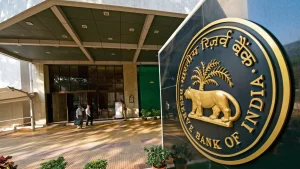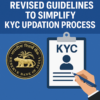
Amid sustained monetary tightening measures by other major central banks including the US Federal Reserve, all eyes are on the Reserve Bank of India, which will announce its key policy rates on September 30. Here is what some of the leading economists and BFSI stakeholders expect from the regulator.
Lakshmi Iyer, Chief Investment Officer (Debt) & Head Products, Kotak Mahindra AMC: The US Fed seems to be on a roll with the pace and quantum of rate hikes. US dollar has been steamrolling both EM and DM currencies alike. Hence despite no major adverse data points in India, RBI MPC may be tempted to deliver a 50-bps rate hike at the upcoming policy. Tone and texture of the guidance could be key for the markets. We could also see some small downward tweaks to GDP growth forecasts with CPI forecasts likely to remain unchanged.
Indranil Pan, Radhika Piplani and Deepthi Mathew, Economists, Business Economics Banking, Yes Bank: Central banks across the world, led by US Fed upped their hawkish tone and are now ready for a larger growth sacrifice in their efforts at containing inflation. Subsequently, INR depreciated sharply and with the interest rate differential between India and the US falling to a 12 year low of 340bps, capital flows are unlikely to be supportive. We now expect the RBI to hike the repo rate by 50bps and continue raising for the next two policies for a terminal rate of 6.50% by end-March 2023.
ICRA: ICRA maintains its forecast that India’s GDP will rise by 7.2% in FY2023, aided by a revival in contact-intensive services owing to pent-up demand, and a back-ended pick-up in government and private capex. While the YoY growth is expected to slow from Q2 FY2023 and further to H2 FY2023, this would largely be optical in nature; growth is expected to pick up. The record generation of average daily GST e-way bills in August 2022, owing to pre-festive stocking, indicates a revival in confidence and this coupled with softening commodity prices bodes well for the upcoming festive season. However, the decline in output of key kharif crops such as rice and flagging external demand pose risks to growth and remain the key monitorables. We expect the MPC to hike rates by 50 bps on September 30, and turn data-dependent thereafter.
Tirthankar Patnaik, Chief Economist, NSE: Our analysis shows that the policy transmission improved under the MCLR regime and more so post the introduction of EBLR in October 2019. Our assessment of the top 1000 NSE listed companies shows a steady drop in overall leverage over the last five years, making India Inc. better placed to weather the rising rate environment. However, MSMEs seem to be in a difficult position given their high dependence on bank borrowings (80% of debt) and greater EBLR-linked loans (58% of the total floating rate loans by SCBs). Developed markets are overheating, emerging and frontier markets are having to tighten policy just after getting out of a global pandemic. India remains one of the economically resilient countries in this scenario. Fiscal and external balances remain in control, domestic demand continues to show signs of recovery. The next few quarters would help differentiate India further on the global stage.
Aditi Gupta, Economist, Bank of Baroda Research: Bank of England intervened to arrest the financial volatility in the market by announcing “purchases of long dated gilts in a temporary and targeted way” for the next two weeks. Growth concerns and expectations of further rate hikes from Fed, drove CNY to its lowest since the Asian Financial Crisis. INR too weakened to a fresh record-low. India’s 10Y yield rose by 4bps (7.33%) on Wednesday, ahead of RBI’s policy decision where a faster pace of rate hike is expected. We now expect a 50 bps rate hike.







